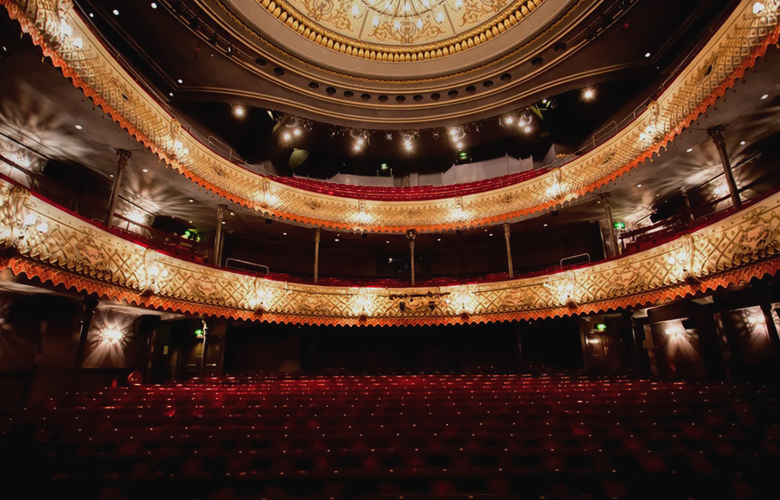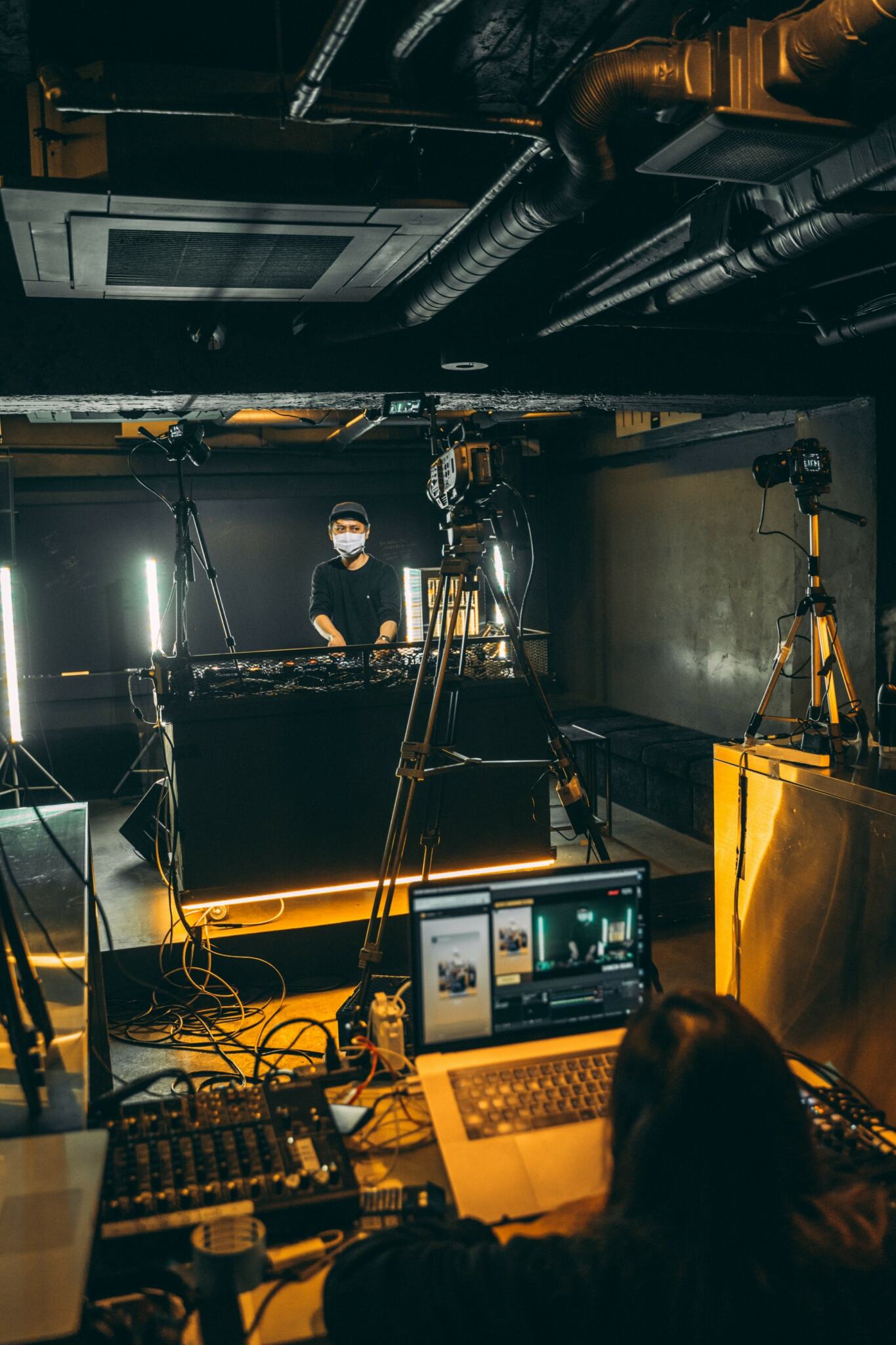
Last week, London’s Old Vic has run a string of performances of Duncan Macmillan’s ‘Lungs’ in-camera. The actors Clare Foy and Matt Smith performed live on stage, albeit socially distanced, to an empty auditorium, with cameras streaming their performance to 1000 home-based, paying viewers, replicating the Old Vic’s auditorium capacity.
This is a whole new experience for a Covid ravaged theatre industry trying to find a way to sustain itself amid a socially distanced new normal. Some scripts, like Macmillan’s Lungs, are unknowingly made for these kinds of restrictions, with no costumes, no set changes, and no interval. It is about as easy as it gets to adapt to these conditions.
But rather than record this in a traditional front to stage camera set up, Director Matthew Warchus has added a split-screen camera view. So, while Smith and Foy are on the same stage, each is shot independently. Warchus uses this split-screen as a directional device, and it creates interesting layers of viewing. One moment we are in close to Foy’s face, next moment we see only Smith’s crossed legs. These oblique angles and cropped shots are unsettling, emphasizing the increasing divide between the characters and highlighting details we may never pay much attention to ordinarily when taking in the entirety of the traditional mis-en -scene. There’s a poignancy that is gained through this technique which suits the theme and tone of the piece.
It makes sense for the viewer to be close, to notice the subtleties of response, seeing emotion play out through gesture, expression, and body language.

While the UK’s National Theatre has previously developed its own ground-breaking project National Theatre Live, that broadcasts its spectacular pre-recorded theatre productions in cinemas in the UK and internationally, Old Vic: In Camera is a new initiative, and requires a simplified and slimmed down production, to enable the show to be performed live with current safety guidelines.
Interestingly, The Old Vic offered a variety of ticket prices for this show, just like they would in any normal season, with differently priced seats. No doubt the demand was driven by the popularity of Macmillan and Warchus as well as the calibre and profile of Foy and Smith.
The success of this show raises the question of whether this could be the way forward for the theatre industry, at least in the short to medium term, when social distancing is likely to be in place, at least to some degree, for the foreseeable future. And while the effects of Covid- 19 have been disastrous for our arts industry globally, this could be a way for theatre companies to continue to offer live productions, and bring in desperately needed income, while helping to support the broader network of artists and theatre workers.
My Friend the Artist: Mr Il Hwan Bae
Going On Tour? Tips For Your Mental Health


I’m Fiona Georgiou-Hunt. I am a playwright, screenwriter, and fiction writer. Australian by birth, I now live in the UK, and as well as creative writing, I work as a marketer and NED. I started my career working in school holidays for theatre producers, Peter & Ellen Williams, at Philip St Theatre in Sydney. At university, I launched a theatre company, Bauhaus, and a youth theatre company, Yorick, before moving onto working on the large professional stage musicals Phantom of the Opera, Miss Saigon, Crazy for You, and Les Miserables. Stage management credits include Grease, Nightwatch, The Dresser and Oh What a Lovely War. In recent times I’ve worked for, been an non exec director and/or written for a range of arts organisations in Australia and the UK including Sydney Opera House, Australian Theatre for Young People, Regional Arts NSW, Arts Conservators, and National Literacy Trust UK. I have written a range of stage plays and screenplays and am currently completing a MA in Scriptwriting at Falmouth University. I have an art writing certification from Sotheby’s, a Bachelor of Education(Drama)(UNSW) a Graduate Diploma in Art History( ANU). When I'm not writing, I run a marketing business, helping arts and not for profits build and market their brands.I'm always happy to help arts organisations with their marketing www.aitchco.co.uk
Read Full Profile© 2021 TheatreArtLife. All rights reserved.

Thank you so much for reading, but you have now reached your free article limit for this month.
Our contributors are currently writing more articles for you to enjoy.
To keep reading, all you have to do is become a subscriber and then you can read unlimited articles anytime.
Your investment will help us continue to ignite connections across the globe in live entertainment and build this community for industry professionals.